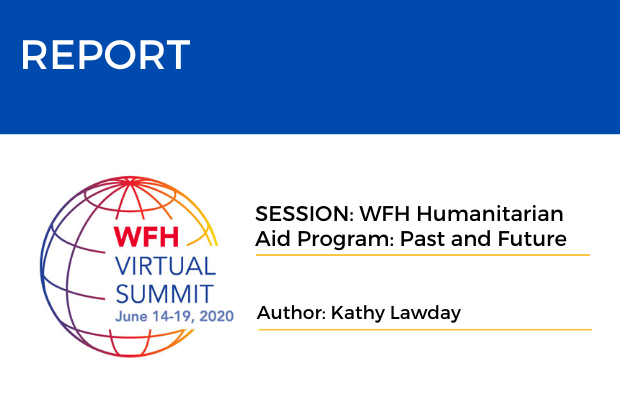Impressions of WFH Virtual Summit

Attending biennial World Federation of Hemophilia World Congresses was a highlight of my professional career in the pharmaceutical industry. From my first congress in Ireland, I enjoyed meeting and learning from health care providers and patients from around the world – not to mention, visiting the venues!
In retirement, I knew it was only a dream to be in Kuala Lumpur in 2020 … so I jumped at the opportunity to attend virtually. Having signed up to report on some sessions during the week for CHS CONTACT, I sat at my computer on a sunny Sunday morning expecting educational but perhaps dry sessions. To my surprise, the virtual experience contained all the elements of the “real” meeting. Starting in the Lobby, I could visit the various areas of the summit such as the poster gallery, the exhibit hall and perhaps catch up and chat with past colleagues and exchange vCards. The lounge allowed networking with speakers, attendees and sponsors, and between busy online sessions there were breaks in which to participate in yoga, meditation or music therapy. For registered participants, sessions, abstracts and ePosters will be accessible, on demand, for one year.
As at all major meetings, there is a degree of serendipity in which sessions one attends. Not being a techie, I logged in early before my session on which I was to report to test out the system and so I dropped in on a session on the WFH Humanitarian Aid Program. The program is moving away from ad hoc product donations to predictable donation commitments from partnering pharmaceutical companies. This allows the program to support not only life- and limb-threatening bleeds and urgent surgeries but also corrective surgery, on-demand treatment and prophylactic replacement therapy. With more predictable and reliable product supplies, the Humanitarian Aid Program (HAP) has helped refugees, patients in areas of conflict and patients accepted for treatment in a country other than their home country. Experiences of the benefits of HAP in Nigeria and Kenya were presented. Regular planned access to treatment is lifesaving in many developing countries, e.g., circumcision mortality has been reduced. Health care teams are also supported by provision of the tools required to treat patients and collect clinical data needed to demonstrate the benefits of prophylaxis to governments and support other advocacy goals. The HAP allows implementation of a sustainable national hemophilia care program across a country such that patients, parents, politicians and health care providers all become more engaged stakeholders.
Dr. Glenn Pierce, WFH Vice President Medical, raised a provocative question: Is gene therapy the next puzzle piece for achieving sustainable therapy worldwide? in the context of HAP. We are just beginning to think about the issues surrounding who receives gene therapy and who pays for it, a particularly intriguing question for low-and middle-income countries. Yes, it will take time but there are known discrepancies in the availability of clotting factor concentrates (CFC). High-income countries account of 64% of global CFC usage and 15% of people with hemophilia worldwide. There is currently insufficient global manufacturing capacity to provide treatment for every person with hemophilia at the minimum standard of 1% trough level, based on the estimated number of people with hemophilia worldwide, never mind the 3% trough level now being advocated for the prevention of joint bleeds and joint damage. The beauty of gene therapy is that once treated – you’re done! Strategies to accelerate its introduction include the WFH World Bleeding Disorder Registry (WBDR) and guidelines for management of hemophilia that are implemented worldwide. In conclusion, Alain Baumann, WFH CEO, thanked the contributing donor companies – Bayer, Roche, Sanofi and Sobi – who spoke to why they stepped up as partners: to make the WFH mission of Treatment for all a reality.




